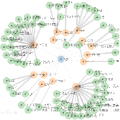Knowledge graphs and ontologies are becoming increasingly vital as they align with the FAIR Guiding Principles (Findable, Accessible, Interoperable, Reusable). We address eleven challenges that may impede the full realization of the potential of FAIR knowledge graphs, as conventional solutions are perceived to be overly complex and lacking in cognitive interoperability. We extend the concept of "semantic units" as a conceptual solution by adding further subcategories. Semantic units structure a knowledge graph into identifiable and semantically meaningful subgraphs, with each subgraph being represented by a resource that instantiates a semantic unit class. We introduce some-instance, most-instances, every-instance, and all-instances resources as new types of representational entities in addition to named-individual, class, and property resources. We combine these new resource types with the concept of semantic units and introduce new subcategories of statement units and semantically meaningful collections of statement units (i.e., compound units) that provide solutions to the eleven challenges. These include, for instance, schemes for modelling assertional, contingent, prototypical, and universal statements, including class axioms, as well as absence statements, negations, and cardinality restrictions. The schemes are alternatives to existing OWL-based modelling schemes, and we provide corresponding representations for them that do not involve blank nodes. With question units we also introduce a way of representing questions in a knowledge graph that can be made readily executable as graph queries. We also provide schemes for directive statements, directive conditional statements, and logical arguments. We argue that semantic units provide a framework that increases the overall expressivity and cognitive interoperability of knowledge graphs compared to conventional OWL-based solutions.
翻译:暂无翻译



